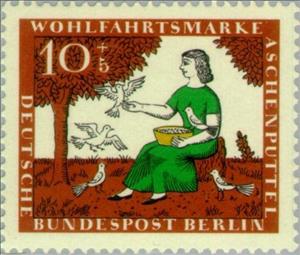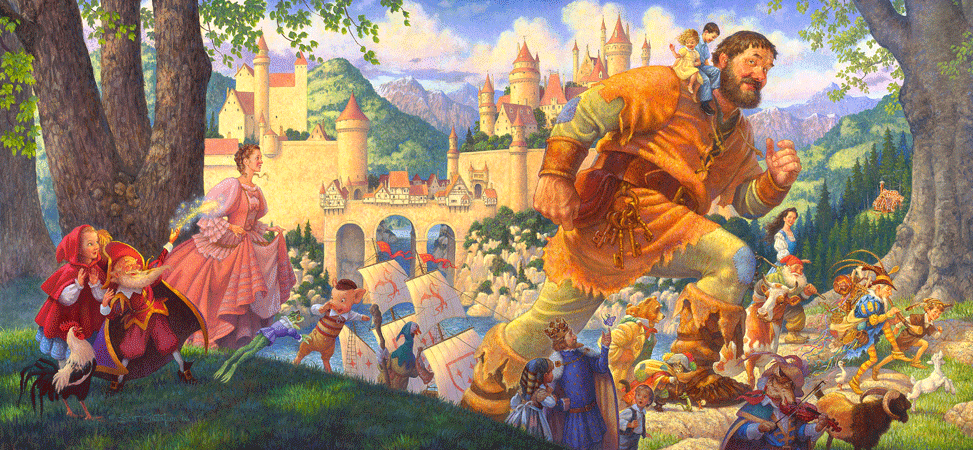Stamp: Scene from the fairy tale 'Cinderella' (Berlin 1965)
Scene from the fairy tale 'Cinderella' (Berlin 1965)
06 October (Berlin ) within release Welfare: Tales of the Brothers Grimm goes into circulation Stamp Scene from the fairy tale 'Cinderella' face value 10+5 German pfennig
| Stamp Scene from the fairy tale 'Cinderella' in catalogues | |
|---|---|
| Michel: | Mi:DE-BE 266 |
| Yvert et Tellier: | Yt:DE-BE 242 |
Stamp is square format.
Also in the issue Welfare: Tales of the Brothers Grimm:
- Stamp - Scene from the fairy tale 'Cinderella' face value 10+5;
- Stamp - Scene from the fairy tale 'Cinderella' face value 15+5;
- Stamp - Scene from the fairy tale 'Cinderella' face value 20+10;
- Stamp - Scene from the fairy tale 'Cinderella' face value 40+20;
Stamp Scene from the fairy tale 'Cinderella' it reflects the thematic directions:
Birds (Aves), a subgroup of Reptiles, are the last living examples of Dinosaurs. They are a group of endothermic vertebrates, characterised by feathers, toothless beaked jaws, the laying of hard-shelled eggs, a high metabolic rate, a four-chambered heart, and a strong yet lightweight skeleton. Birds live worldwide and range in size from the 5 cm (2 in) bee hummingbird to the 2.75 m (9 ft) ostrich. They rank as the class of tetrapods with the most living species, at approximately ten thousand, with more than half of these being passerines, sometimes known as perching birds. Birds are the closest living relatives of crocodilians.
A fairy tale (alternative names include fairytale, fairy story, magic tale, or wonder tale) is a short story that belongs to the folklore genre.Such stories typically feature magic, enchantments, and mythical or fanciful beings. In most cultures, there is no clear line separating myth from folk or fairy tale; all these together form the literature of preliterate societies. Fairy tales may be distinguished from other folk narratives such as legends (which generally involve belief in the veracity of the events described) and explicit moral tales, including beast fables. Prevalent elements include dragons, dwarfs, elves, fairies, giants, gnomes, goblins, griffins, merfolk, monsters, talking animals, trolls, unicorns, witches, wizards, magic, and enchantments.
Animals are multicellular, eukaryotic organisms of the kingdom Animalia (also called Metazoa). All animals are motile, meaning they can move spontaneously and independently, at some point in their lives. Their body plan eventually becomes fixed as they develop, although some undergo a process of metamorphosis later on in their lives. All animals are heterotrophs: they must ingest other organisms or their products for sustenance.



